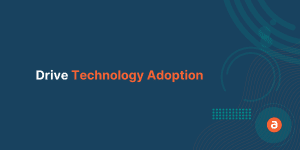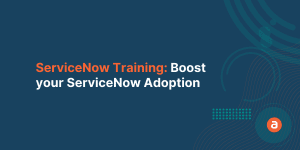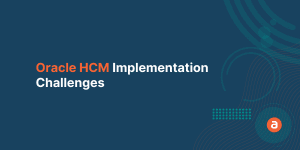Digital transformations drive change at unprecedented rates. Companies are adopting new technologies and digitizing their business at record speeds. The increased emphasis on successful digital transformation forces CIOs to take on an essential role in organizational change.
CIOs are used to leading and managing big projects and initiatives, but the need for digital transformation is different. Successful digital adoption requires changes not only to IT infrastructure but the overall business process and culture. In this blog post, we’re taking a look at five essential roles CIOs fill in driving successful change:
- Align leadership
- Create a vision and strategy
- Find and develop the right talent
- Invest in infrastructure
- Transform operations and culture
How CIOs Can Drive Organization Change
Essential Role 1: Align Leadership
As we said several times on this blog, digital initiatives fail when leaders are not invested in the project. Before undertaking a digital transformation, a CIO needs to ensure the entire executive leadership is invested in digital transformation.
CIOs must also be champions for change. A successful CIO will be proactive in presenting new technologies and opportunities to other company leaders. In the past, CIOs were tasked with evaluating technologies and implementing them to meet business needs described by other leaders. Now, they must challenge their colleagues to digitize or risk being eclipsed by their competition.
Essential Role 2: Create and Vision and Strategy
The fast pace of change during digital transformation can lead to uncertainty. CIOs should cast a clear vision and develop a sound strategy for a company to rally behind. The entire c-suite should create a strategy and plan for moving the business forward. The CIO should ensure the company’s digital investments and technology stack is evolving to meet those business goals.
Whether they’re talking to their fellow executives or to front-line employees, CIOs will have to sell people on the change. They’ll need to craft a compelling vision that excites people about what’s coming. People are naturally resistant to change. A concise vision and strategy that clearly communicates how digital transformation will improve their experience can alleviate resistance.
Essential Role 3: Find and Develop the Right Talent
After identifying the strategy, a CIO needs to ensure the company has the right team has the right talent to support its digital transformation. If you’re adding to or changing your tech stack, you’ll likely need a workforce with diverse and different skill sets. For example, if you’re trying to adopt Salesforce, you can’t wait until after you go live to hire people with Salesforce experience. Start by assessing what skills and technologies your current staff are knowledgeable about and then begin recruiting to fill any gaps.
Essential Role 4: Invest in Infrastructure
Along with talent, a CIO needs to ensure companies have the right infrastructure. CIOs will need to be strategic in securing the budget for long-term investments in technology.
One of the main challenges in investing in the right infrastructure is the sheer volume of platforms and vendors to choose from. CIOs should consider launching programs that pilot new technologies. When testing new technologies, remember to test for scalable and secure technologies that can easily grow with the business.
Essential Role 5: Transform Operations and Culture
A CIO’s most essential role in digital transformation is the most obvious and perhaps the most difficult – they must be an advocate for change. The CIO needs to lead the charge for changing company practices, processes, technology, and people.
This radical transformation has to begin in the IT operations. Many companies operate with a waterfall approach to IT project management. The approach is too rigid to allow for the fluid and fast-paced change needed for a modern digital business. CIOs will need to institute a more agile approach used by DevOps teams.
A waterfall approach worked when the budget, scope, and timeline for a project were easily defined, but digital transformation isn’t a once and done project. Digital transformation will continue to happen as technologies are changing faster than ever before. An agile approach is better suited to this environment because you can update your requirements as your strategy evolves.
Some of the advantages of an agile approach include:
- Faster deployments
- Easier to experiment and test ideas
- Better able to respond and adapt to change better
CIOs a Change Management Champions
A modern CIO has to master the art of change management in each of the roles we outlined:
- Aligning their fellow executives on a digital transformation strategy
- Creating and communicating a vision for change
- Hiring and developing the right staff
- Securing investments in IT infrastructure
- Creating an agile operation and culture of change













